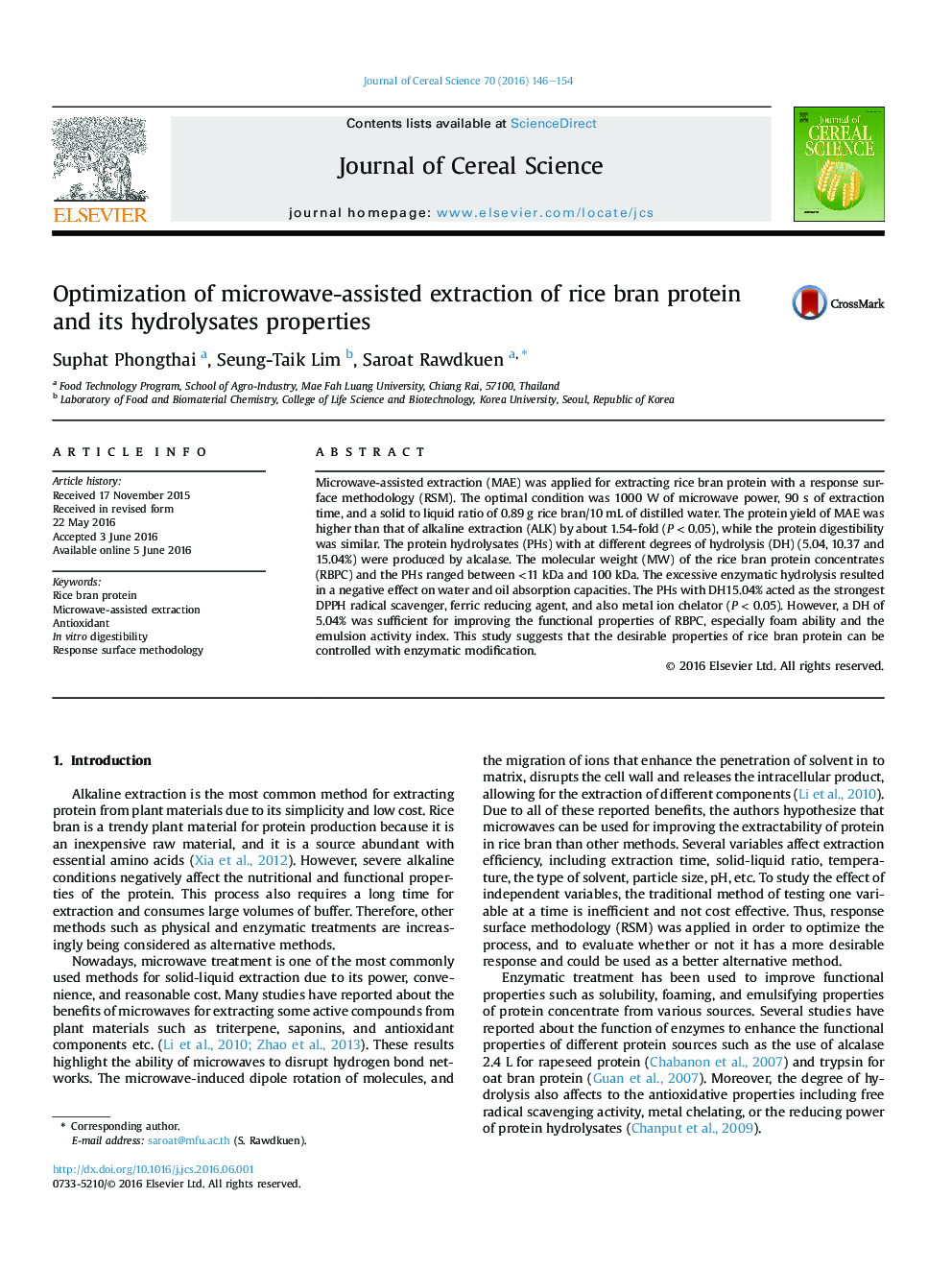| Article ID | Journal | Published Year | Pages | File Type |
|---|---|---|---|---|
| 4515488 | Journal of Cereal Science | 2016 | 9 Pages |
•Rice bran protein concentrates were successfully prepared by MAE using RSM.•The protein yield of MAE was higher than that of alkaline extraction.•The digestibility of MAE-protein was higher than soy protein concentrates.•The hydrolysis by Alcalase enhanced antioxidative and functional properties.
Microwave-assisted extraction (MAE) was applied for extracting rice bran protein with a response surface methodology (RSM). The optimal condition was 1000 W of microwave power, 90 s of extraction time, and a solid to liquid ratio of 0.89 g rice bran/10 mL of distilled water. The protein yield of MAE was higher than that of alkaline extraction (ALK) by about 1.54-fold (P < 0.05), while the protein digestibility was similar. The protein hydrolysates (PHs) with at different degrees of hydrolysis (DH) (5.04, 10.37 and 15.04%) were produced by alcalase. The molecular weight (MW) of the rice bran protein concentrates (RBPC) and the PHs ranged between <11 kDa and 100 kDa. The excessive enzymatic hydrolysis resulted in a negative effect on water and oil absorption capacities. The PHs with DH15.04% acted as the strongest DPPH radical scavenger, ferric reducing agent, and also metal ion chelator (P < 0.05). However, a DH of 5.04% was sufficient for improving the functional properties of RBPC, especially foam ability and the emulsion activity index. This study suggests that the desirable properties of rice bran protein can be controlled with enzymatic modification.
